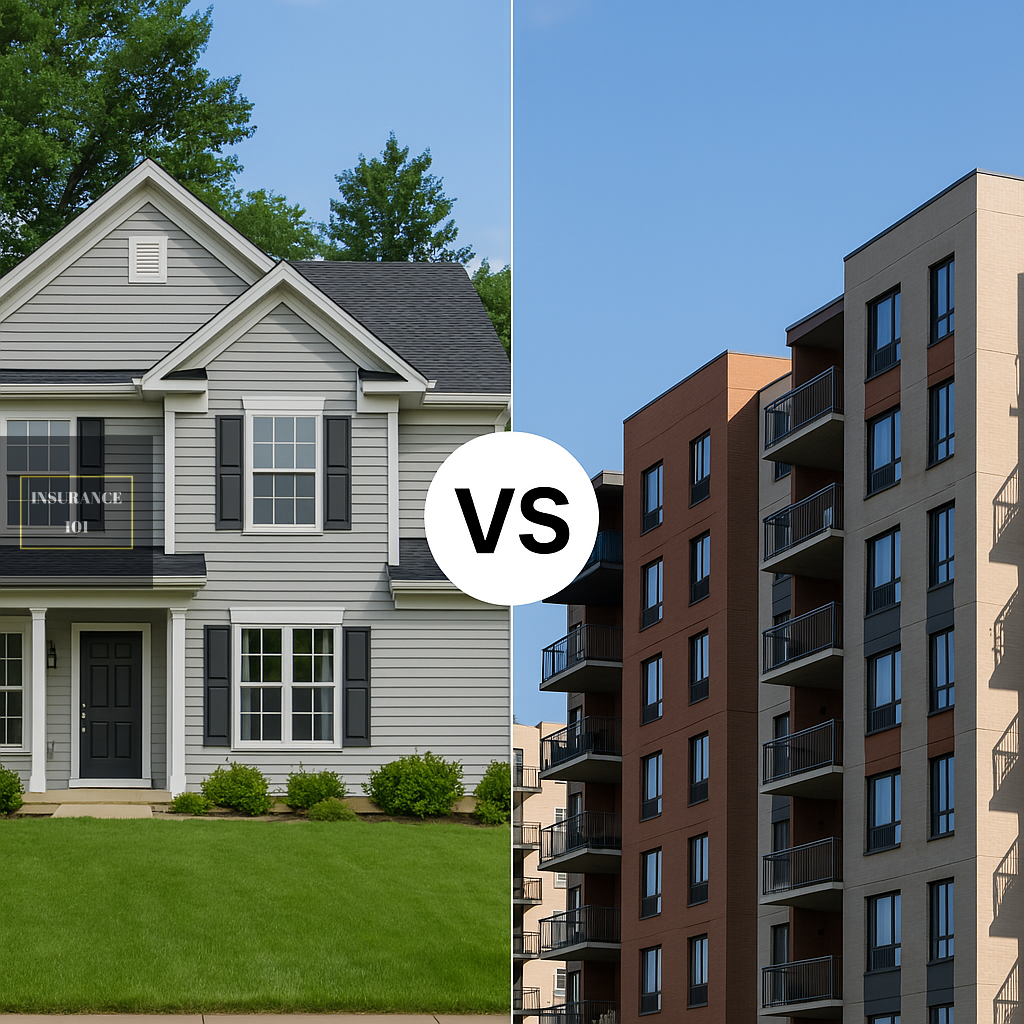Why Are Your Home Insurance Premiums So High? You’re Not Alone
It’s a question more homeowners are asking in 2025 than ever before: “Why is my home insurance so expensive?” Whether you live in a coastal region threatened by climate change, a high-crime urban area, or a peaceful suburb with increasing rebuild costs, chances are you’ve seen your premiums creep upwards year after year.
According to the Swiss Re Institute, the global home insurance market has grown by over 4.2% annually since 2020. In high-risk areas, premiums have surged by as much as 22% since 2022, driven by climate-related disasters, rising construction costs, and higher reinsurance rates. What was once a small monthly cost is now a significant line item in many household budgets.
This article tackles that growing concern.
You’ll discover five proven, data-driven strategies that can help reduce your home insurance premiums without compromising on essential protection. Whether you’re in Nairobi, New York, Sydney, Toronto, or Berlin, these techniques work across borders, insurers, and home types.
We’ll cover:
- Real-life examples of homeowners who slashed their premiums
- Recent trends influencing rates in 2025
- Key terms you must understand
- An expert interview with Dr. Evelyn Kimathi, a senior underwriter at Allianz Global Corporate & Specialty
- Useful tables and statistics
- A full glossary at the end
Let’s dive in.
1. Boost Your Home’s Security — Insurers Love It
The Relationship Between Risk and Premium
Home insurance, at its core, is risk-based. The higher the risk of a claim, the higher the premium.
One of the easiest ways to lower perceived risk is to fortify your home.
“Homeowners who install certified burglar alarms, smoke detectors, deadbolt locks, and surveillance cameras can receive up to 20% discounts on their annual premiums,” says Dr. Evelyn Kimathi, who has worked in underwriting for over 15 years with global insurers across Europe and Africa.
Data Snapshot: Security Measures vs. Premium Reductions
| Security Feature | Potential Premium Reduction (%) |
|---|---|
| Monitored security system | 15–20% |
| Deadbolts and window locks | 5–10% |
| Fire alarms and extinguishers | 5–10% |
| Smart home sensors (water/fire) | 10–15% |
Example:
A homeowner in Toronto, Canada installed a full ADT-monitored security system in 2024. After submitting proof to their insurer, they received a CAD 210 discount on a CAD 1,050 annual policy.
Pro Tip:
Insurers prefer monitored systems connected to emergency responders. DIY cameras often don’t count toward significant savings.
2. Bundle Your Insurance Policies for Multi-Line Discounts
What Is Bundling?
Bundling is when you purchase multiple insurance policies (e.g., auto + home) from the same provider. Insurers reward customer loyalty and reduced administrative costs by offering multi-line discounts.
“Our internal data shows that bundled clients are 38% less likely to switch insurers, which makes them ideal long-term customers,” explains Dr. Kimathi. “That’s why we incentivize bundling with significant discounts.”
Global Trends: Bundling Discounts by Region (2024 Data)
| Region | Average Discount on Bundled Policies (%) |
|---|---|
| North America | 10–25% |
| Europe | 8–20% |
| Australia/NZ | 12–18% |
| Africa | 5–15% (emerging market) |
Example:
In Cape Town, South Africa, a homeowner switched their auto and home policies to the same provider. Their combined annual premium dropped by ZAR 1,320 — about 17% off.
Tip for Global Policyholders:
Always shop quotes for bundled policies using international comparison sites like:
- Compare the Market
- Policygenius
- GoCompare
3. Increase Your Deductible – But Be Strategic
What Is a Deductible?
A deductible is the amount you pay out of pocket before your insurance kicks in. Higher deductibles = lower premiums.
Formula:
Adjusted Premium = Base Premium × Risk Modifier – Deductible Adjustment
The deductible adjustment is insurer-specific but typically ranges between 5–20% for every $500 increase.
How It Works:
Let’s say your current deductible is $500, and you’re paying $1,200 annually. Raising the deductible to $1,500 might drop your annual premium to $950 — a savings of $250/year.
Global Example:
In Melbourne, Australia, homeowner Lisa Zhang increased her deductible from AUD 1,000 to AUD 2,500. Her annual premium decreased by AUD 420.
Warning:
Only raise your deductible if you have sufficient emergency savings. Otherwise, you may struggle during a claim.
4. Review Your Coverage Annually and Remove Redundancies
Why Coverage Audits Matter
Many homeowners are over-insured, paying for coverage they don’t need. It’s common to see duplication, outdated riders, or inflated rebuild cost estimates.
Items to Review:
- Rebuild cost vs. market value: Insure the rebuild cost, not the market price
- Personal property riders: Are you still paying for jewelry or electronics you sold?
- Inflation protection: Check how much your premiums increase annually
- Flood or earthquake insurance: If it’s not relevant to your area, remove it
Example:
In Texas, USA, homeowner Jonathan Miles removed an unnecessary earthquake rider after an annual policy review. His premium dropped by $180/year.
“It’s crucial to reassess your policy every year, especially if your life circumstances or the real estate market has changed,” says Dr. Kimathi.
5. Maintain a Good Credit Score (Where It Applies)
The Hidden Factor Behind High Premiums
In many countries (especially the U.S., Canada, and parts of Asia), your credit-based insurance score plays a huge role in your home insurance premium.
Why Do Insurers Use Credit?
Statistically, homeowners with poor credit are more likely to file claims. This correlation is used by underwriters to price risk.
Data: Average Premium Differences by Credit Score (U.S. 2024)
| Credit Score Tier | Annual Premium (USD) |
|---|---|
| Excellent (750+) | $1,025 |
| Good (700–749) | $1,180 |
| Fair (650–699) | $1,375 |
| Poor (below 650) | $1,920 |
“Improving your credit score even by 30 points can save you hundreds per year,” advises Dr. Kimathi.
Global Note:
In countries where credit-based insurance pricing is banned (like the UK or France), insurers use alternate risk measures, such as employment stability or past claims history.
Real-Life Case Study: The Global Saver’s Blueprint
Name: Angela Owusu
Location: Accra, Ghana
Insurer: Hollard Ghana
Home Value: GHS 750,000
Original Premium: GHS 3,200/year
Current Premium: GHS 2,100/year
Savings: GHS 1,100/year (34%)
How She Did It:
- Installed a CCTV-monitored security system — 12% discount
- Increased deductible by GHS 1,000 — 8% reduction
- Removed unused personal effects riders — 6% reduction
- Bundled with auto policy — 8% discount
Angela says:
“Most people think insurance is fixed. I thought I had to live with the cost. But once I called my insurer and reviewed everything line by line, I realized I was paying for things I didn’t need. It’s been eye-opening.”
Future Outlook: Why Premiums May Rise Again (And How to Stay Ahead)
The Insurance Information Institute forecasts an average global premium increase of 6% annually through 2030, mainly due to:
- Climate-related catastrophes
- Urban expansion into risk zones
- Higher reinsurance costs
- Inflation in construction materials and labor
To protect your finances, revisit these five tips yearly and stay proactive. Your insurer’s goal is profitability. Yours is protection with affordability.
Final Words
Lowering your home insurance premiums in 2025 is absolutely possible—if you know where to look and act strategically.
From upgrading your security to bundling your policies and maintaining a solid credit score, small, informed steps can translate into big savings. And with the insurance market growing more complex each year, being an educated policyholder is no longer optional — it’s essential.
As Dr. Kimathi noted in our interview,
“Insurance doesn’t reward apathy. It rewards awareness.”
Bookmark this article, share it with fellow homeowners, and take control of your policy today.
Glossary
Deductible – The amount the policyholder must pay out of pocket before the insurer pays a claim.
Bundling – Combining multiple insurance policies with one provider for a discount.
Rebuild Cost – The cost to reconstruct your home from scratch, not the current market value.
Rider – An optional add-on to an insurance policy that modifies the basic coverage.
Credit-Based Insurance Score – A numerical rating based on credit data used by some insurers to predict claim risk.
Premium – The amount paid (monthly, quarterly, or annually) to maintain an insurance policy.
Underwriting – The process by which an insurer evaluates the risk of insuring a home.
Want more expert insights? Visit Insurance-101.com for authoritative guides, global trends, and smart tools to protect what matters most.
Discover more from INSURANCE 101
Subscribe to get the latest posts sent to your email.




2 thoughts on “Top 5 Tips to Lower Your Home Insurance Premiums”